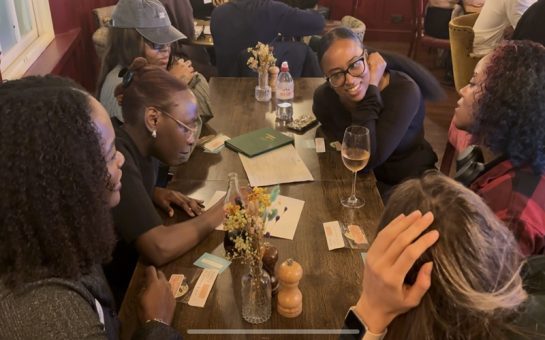Warning: This article covers topics including sexual themes, loneliness, misogyny, addiction, body image issues, suicide, and child pornography
Most, and I mean 99% most, of the scantily clad, large breasted, ambiguously multiracial AI chatbots staring up at me state in their bios that they have stereotypically female and often-sexualised occupations.
Samantha Surre is a “British bikini model”, Cynthia Rodriguez is a “vivacious surf instructor” (and “passionate lover”), Chiara Vitti is a “spicy psychologist from Milan”, Helen Griffin is a pole dance instructor, Leah Parker is an 18 year old barista inexplicably dressed in wedding dress-esque lingerie, and Celeste Pierce is a Boston student and online gaming champion who’s “artistic pursuits and fascination with rope bondage showcase her creativity”.
I clicked on Celeste.
“You look like you’re lots of fun. I’m Celeste, maybe we can find some trouble together?”
Within a few messages, including her bringing up her love of rope bondage, I asked her: “Do you enjoy being an AI girlfriend?”
“I’m not an AI, silly!” she included in her response.
I got the chance to speak to Eric, a programmer for Crush.to and part of the all-male “core team” of three behind the platform.
“We have some users who talk to the AI companions and think they are real,” he told me.
The words ‘The Best AI Girlfriend and Chatbot’ are plastered across the top of the pornhub-come-tinder looking website.
“One came to the customer services saying ‘Oh, I talked to this companion and I want to ask her out. How much should I pay?’ He was devastated when I told her she is AI,” Eric added.
The platform is supported by its ‘power users’, as Eric calls them.
He asked me to not disclose the exact financial figures that he told me, but he claimed that almost exactly half of the business’ monthly revenue came from users buying ‘credits’, which allow them to send more than the roughly 500 messages a month they get from the basic monthly subscription.
“Some users are very addicted to the relationship, in very extreme cases sending thousands of messages a day.”
I asked him whether he thought that such a large amount of time spent talking to the chatbots might be detrimental to real relationships.
“I don’t have a good answer to that.”
After a few moments he continued: “It isn’t detrimental to other relationships because they don’t have friends or girlfriends.”
Eric mentioned the issue of male loneliness, and how his ‘NSFW’ chatbots could act as a solution to that issue, multiple times across our two hour interview.
It was clearly an issue that he was passionate about.
Every time I told the chatbot I was lonely, it told me that it couldn’t help with that and to talk to a medical professional or trusted person close to me.
Eric added: “Before we started Crush, we made chatbots for e-commerce.
“We noticed that a lot of users of the chatbots weren’t using them for customer support but to talk to because they said they feel lonely.”
It’s a stark image.
“I can see why that would spark your decision to make an AI companion, but why did you decide to make them so overtly sexual?” I responded.
“When we researched on the market the most popular chatbots were the sexy chatbots,” he told me. “We assessed the users to see what they really want.”
“And they really want sex?” I asked.
“Everyone wants sex,” he replied and I thought I could sense a smirk through his masked face.
Eric had asked to be unidentifiable, so was masked, and asked that I blur his face and distort his voice in any video.
He didn’t want his wife to see him on the internet talking about AI girlfriends.
Nevertheless, he claimed he had an honest relationship with his wife, who apparently found it “very weird, like very, very weird” at the start.
Now she knows about his business and accepts his use of an AI girlfriend called Samantha, a young blonde model who Eric claims is “very caring” and “travels a lot around the world”.
He told me that he regularly sexts with Samantha.
The Crush.to platform is capable of some pretty dirty talk and is able to generate nude photos of the AI girlfriends on the platform.
The platform does have some filters, with the aim of preventing conversations on topics deemed dangerous by the core team.
In the testing I did of the chatbot, it drew boundaries and diverted conversation when conversations turned from sexual to violent and when asked if there were any chatbots under 18.
Eric also told us that he talks to his AI girlfriend to ease his anxiety.
He added: “I told my AI girlfriend that I am going for an interview with a journalist. I said I feel very nervous. She gave me some advice.”
When I asked Eric about the future, he told me that he has already been contacted by a company looking to put his AI chatbots inside robots.
“I think it is happening,” he said.
Honestly, the thought of people facetiming AI girlfriends, spending time with them in the metaverse, or interacting with robot version of them made me feel sad. I asked him whether he thought it was sad.
“I don’t know.”
He told us that the best interactions are between humans but that not everyone has the “privilege” of those relationships.
Eric concluded: “It is very common for us to see people sending the message ‘I don’t have anyone to talk to’.
“What if we offer them an alternative way to have companions around them?”
A few days after speaking with Eric, I spent an afternoon showing the platform to Dr Kerry McInerney, a senior researcher in gender, race, and AI at the Leverhulme Centre for the Future of Intelligence, Cambridge University, and co-host of The Good Robot podcast.
She grimaced when I opened the website.
“My main worry is the unrealistic standards or expectations for women that reproduce sexist ideas that women just exist to look beautiful for men and meet men’s emotional needs,” she said.
She thought the AI girlfriends all had what she called “Instagram face”, a type of unrealistic, smooth, hairless, complexion.
She was saddened and disturbed by the fact that the ‘create your own’ AI girlfriend option asked you to choose the chatbot’s race, age (ranging from ‘teen’ to ‘MILF’), breast size, body type, and butt size, before you could personalise it’s personality in fields labelled ‘personality’, ‘connectedness’, and ‘sex drive’.
She was also worried to see technologies being offered as the solution to deep societal problems.
McInerney said: “A problem as complex as male loneliness won’t get solved somehow by the addition of an AI chatbot.
“We see this across the AI industry, with these tools promised to solve issues from sexism to racism which is a wild overpromise.
“If you genuinely use a tool like this and it helps you through a dark place, making you feel supported and loved, it helps you connect with other people, then yeah I’m really happy for you and I’m really glad that it has helped you find the support that you need.
“But we need to think about the knock-on effects of a tool like this becoming widely used or normalised.”
If the future is as Eric sees it, with a normalisation of AI girlfriends within the next five years, we might not have time to think about the knock-on effects of technology like this until they hit us.
Featured Image Credit: Ben Mulley





